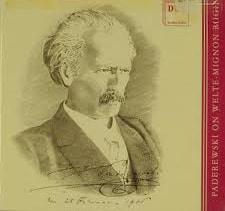

Release Date: February 18, 2022
ECM New Series 2705
His single greatest accomplishment has been navigating his stardom with- out compromising his individuality and without abandoning his disarmingly personal quest for musical meaning. The fruit of that quest, paired with an expressiveness that is somehow prior to and beyond technique, makes Mr. Kremer one of the most riveting musicians today. – The New York Times
New York, NY – Gidon Kremer’s ardent championing of the work of Mieczysław Weinberg (1919-1996) has helped to bring about a re-evaluation of the Polish composer’s music. This new recording, conceived as “a monument to magnificent 20th century solo literature for violin,” brings together Weinberg’s three sonatas, written in 1964, 1967 and 1979. It will be released by ECM New Series on February 18, 2022 on the occasion of Gidon Kremer’s 75th birthday on February 27. The release also celebrates 40 years of collaboration between Kremer and ECM.
“I am very pleased,” Kremer has said, “that the world is slowly recognizing Mieczysław Weinberg as an important composer. For me personally, the treasure trove of his compositions remains a constant source of enthusiasm and inspiration.”
The present album, recorded at Lockenhaus and at Studio Residence Palesius, Lithuania, is Kremer’s third ECM release to feature music of Mieczysław Weinberg, and follows discs emphasizing Weinberg’s chamber music and chamber symphonies, performed with musicians of Kremerata Baltica.
On this recording, Kremer plays a violin made by Nicola Amati in 1641, which, as he says, “allowed great tension and versatility to be imparted to the notes of Weinberg.”
Weinberg’s three sonatas are richly creative and technically demanding works, rooted in the great tradition established by Bach’s sonatas and partitas for solo violin. Yet, while they are reflections on contrapuntal invention, they are also radically expressive pieces. Each has a strikingly different formal design and heard side by side they give insight into the evolution of Weinberg’s musical thought.
Gidon Kremer has drawn comparisons between Weinberg’s complex Third Sonata (dedicated to the memory of the composer’s father) and the Bartók solo sonata. It is a work overflowing with dynamism and colour and emotion. In the liner notes Wolfgang Sandner remarks that the sonata´s, “underlying character, with its extremely dissonant double-stops, madcap agglomerations of trills and passages of almost ghostly textural thinness, only becomes comprehensible in the light of its dedicatee and his fate, which Weinberg must have borne constantly in mind in his efforts to fashion a dramatic musical edifice.”
Born in Warsaw in 1919, the son of a Jewish theatre musician, Mieczysław Weinberg taught himself to play the piano, continuing studies at the Warsaw Conservatory. Subsequent plans to study in the United States were thwarted by the outbreak of World War II. Following the invasion of Poland, Weinberg fled first to Minsk, where he received his initial training in composition, and then to Tashkent in Uzbekistan. He came to Moscow in 1943 at the suggestion of Shostakovich, who had admired the score of his first symphony. The two composers subsequently became close friends and exchanged ideas on art and music.
Weinberg was a prolific composer, writing 26 symphonies, 17 string quartets, six concertos, seven operas, 28 sonatas, more than 200 songs, scores for 60 films, theatre music and more. But his relationship to Soviet officialdom was often troubled. Like many composers in the Soviet Union, Weinberg was obliged to spend much of his creative life negotiating the margins of freedom between official doctrine and artistic necessity. In the 1960s and 70s as the demands for Socialist Realism began to slacken, his music moved into its most productive phase, but Weinberg’s artistic independence still left him outside all the musical tendencies of the day. A number of his major works, including his opera Passazhirka (The Passenger), were not performed in his lifetime.
Gidon Kremer was born into a musical family in Riga, Latvia, in 1947 and took up the violin at the age of four. Aged eighteen, he began his studies with David Oistrakh at the Moscow Conservatory and then launched a dazzling solo career by winning first prize in both the Paganini and Tchaikovsky International Competitions while still in his early twenties. Recordings with Kremer have been part of ECM New Series since the label’s inception, the violinist appearing on Arvo Pärt’s epochal Tabula Rasa. This was soon followed by several albums from the Lockenhaus Chamber Music Festival, which Kremer had founded in 1981.
His many recordings for ECM incorporate music of Giya Kancheli, Sofia Gubaidulina,Victor Kissine and other composers, as well as a widely acclaimed account of Johann Sebastian Bach’s Sonatas and Partitas for Violin Solo.




